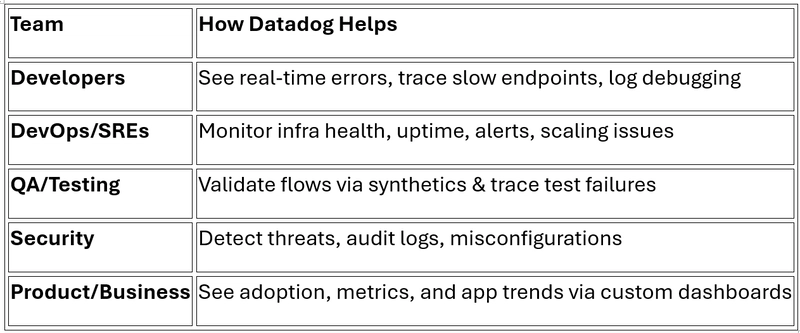Choosing Dialogue to Deepen the Question (Bite-size Article)
Introduction In today's highly information-driven society, we can find a great deal of information online. When we face something we don't understand, using Google or other search engines has become the most common way to solve problems. Other methods—like using search-based AIs such as Perplexity or You.com, or consulting printed materials at a library—are essentially the same in nature. However, there are certain problems that searching simply cannot resolve. Have you ever found yourself in situations like these? You feel vaguely anxious, but you can't pinpoint the reason You have a general sense of unease about the future, but can't articulate what you're anxious about You need to make a decision, but you feel stuck and can't settle on a clear framework for judgment When faced with problems where even the "shape of the question" is unclear, we still tend to rely on search engines. But searching only works when your question is already well-defined. The vaguer the question, the more scattered and unhelpful the search results become, often adding to the confusion. Or perhaps you subconsciously know that “this can’t be solved by searching,” and end up doing nothing at all. As a result, vague feelings of unease and stress can pile up over time. These issues are often overlooked, but they can gradually exert a heavy toll on your mental well-being. So then—how should we approach problems like these? The Concept of Dialectic One method for facing these kinds of problems is to “think through dialogue.” The ancient Greek philosopher Socrates sought to deepen questions and reveal the structure of thought through conversation with others. This is what’s known as dialectic—an approach in which repeated questioning and answering reveals unspoken assumptions and contradictions, helping to organize one’s thinking. This dialectical method is also reflected in counseling, coaching, and conversations with trusted friends. When a question is still vague, the first step is often to clarify the question itself. And this often becomes possible only when someone else asks us the right questions. Through probing, putting thoughts into words, and organizing the sequence of thinking, the nature of anxiety or indecision begins to come into focus. What Kind of Problems Is It Suited For? Dialectical approaches are useful for various kinds of problems, but they’re especially effective for those that are emotionally charged or structurally complex: Anxiety about the future (a vague sense of urgency) Career or life path decisions (uncertainty about what’s right) Discomfort or fatigue in relationships (not sure if you're angry, sad, or something else) Wanting to start something new but lacking confidence or clarity Wanting to sort out your values and priorities In general, these types of problems don't have a single “correct” answer. However, by engaging in the process of thinking through dialogue, it's often possible to arrive at a sense of personal clarity or resolution. An Example of Using Dialectic So far, we’ve explored the concept of dialogue and dialectic, but it may still feel a bit abstract. Here’s a concrete example of how someone might gradually uncover the source of their anxiety through dialogue: User :Lately I’ve been feeling kind of anxious, but I’m not sure why. Listener : When did you start feeling this way? Was there any kind of trigger? User : Maybe since I quit my job six months ago. I do have more freedom now, but I feel this constant pressure. Listener : I see. Feeling both “freedom” and “pressure” at the same time is interesting. What exactly are you feeling pressured about? User : I feel like I need to achieve something, or I’ll get left behind by everyone. Listener : Where do you think that sense of “needing to achieve” is coming from? User : Maybe from seeing my college friends building their careers on social media. In this example, the user gradually begins to put vague feelings into words through dialogue with the listener. They come to realize that their anxiety stems not from external events, but from internal beliefs and value systems—such as the unconscious assumption that they must constantly produce results, and the pressure of comparing themselves to others. This kind of question-and-answer exchange allows previously hidden structures of thought to surface. That is the real power of dialectical dialogue. Exploring the Option of Dialogue with AI Now let’s get to the core of this article. Up until recently, dialectical approaches—dialogue-based methods for uncovering deeper questions—were only possible through interactions with trusted friends or professional counselors. But unlike a quick Google search, these kinds of conversations are not easy to come by. For example, you may not have someone you trust nearby to talk to, or you may not have the financial means to afford counseling services. In these cases, the hur

Introduction
In today's highly information-driven society, we can find a great deal of information online. When we face something we don't understand, using Google or other search engines has become the most common way to solve problems. Other methods—like using search-based AIs such as Perplexity or You.com, or consulting printed materials at a library—are essentially the same in nature.
However, there are certain problems that searching simply cannot resolve.
Have you ever found yourself in situations like these?
- You feel vaguely anxious, but you can't pinpoint the reason
- You have a general sense of unease about the future, but can't articulate what you're anxious about
- You need to make a decision, but you feel stuck and can't settle on a clear framework for judgment
When faced with problems where even the "shape of the question" is unclear, we still tend to rely on search engines. But searching only works when your question is already well-defined. The vaguer the question, the more scattered and unhelpful the search results become, often adding to the confusion.
Or perhaps you subconsciously know that “this can’t be solved by searching,” and end up doing nothing at all. As a result, vague feelings of unease and stress can pile up over time. These issues are often overlooked, but they can gradually exert a heavy toll on your mental well-being.
So then—how should we approach problems like these?
The Concept of Dialectic
One method for facing these kinds of problems is to “think through dialogue.”
The ancient Greek philosopher Socrates sought to deepen questions and reveal the structure of thought through conversation with others. This is what’s known as dialectic—an approach in which repeated questioning and answering reveals unspoken assumptions and contradictions, helping to organize one’s thinking.
This dialectical method is also reflected in counseling, coaching, and conversations with trusted friends.
When a question is still vague, the first step is often to clarify the question itself. And this often becomes possible only when someone else asks us the right questions. Through probing, putting thoughts into words, and organizing the sequence of thinking, the nature of anxiety or indecision begins to come into focus.
What Kind of Problems Is It Suited For?
Dialectical approaches are useful for various kinds of problems, but they’re especially effective for those that are emotionally charged or structurally complex:
- Anxiety about the future (a vague sense of urgency)
- Career or life path decisions (uncertainty about what’s right)
- Discomfort or fatigue in relationships (not sure if you're angry, sad, or something else)
- Wanting to start something new but lacking confidence or clarity
- Wanting to sort out your values and priorities
In general, these types of problems don't have a single “correct” answer.
However, by engaging in the process of thinking through dialogue, it's often possible to arrive at a sense of personal clarity or resolution.
An Example of Using Dialectic
So far, we’ve explored the concept of dialogue and dialectic, but it may still feel a bit abstract.
Here’s a concrete example of how someone might gradually uncover the source of their anxiety through dialogue:
User :Lately I’ve been feeling kind of anxious, but I’m not sure why.
Listener : When did you start feeling this way? Was there any kind of trigger?
User : Maybe since I quit my job six months ago. I do have more freedom now, but I feel this constant pressure.
Listener : I see. Feeling both “freedom” and “pressure” at the same time is interesting. What exactly are you feeling pressured about?
User : I feel like I need to achieve something, or I’ll get left behind by everyone.
Listener : Where do you think that sense of “needing to achieve” is coming from?
User : Maybe from seeing my college friends building their careers on social media.
In this example, the user gradually begins to put vague feelings into words through dialogue with the listener.
They come to realize that their anxiety stems not from external events, but from internal beliefs and value systems—such as the unconscious assumption that they must constantly produce results, and the pressure of comparing themselves to others.
This kind of question-and-answer exchange allows previously hidden structures of thought to surface.
That is the real power of dialectical dialogue.
Exploring the Option of Dialogue with AI
Now let’s get to the core of this article.
Up until recently, dialectical approaches—dialogue-based methods for uncovering deeper questions—were only possible through interactions with trusted friends or professional counselors. But unlike a quick Google search, these kinds of conversations are not easy to come by. For example, you may not have someone you trust nearby to talk to, or you may not have the financial means to afford counseling services. In these cases, the hurdle to engaging in deep dialogue is unexpectedly high.
However, in recent years, advanced AI chatbots like ChatGPT have emerged, enabling more meaningful conversation than ever before. Many of these tools are available for free or at very low cost, and are becoming increasingly accessible to anyone.
Through dialogue with AI, it has become possible to recreate—at least to some extent—the kind of deep thinking process that was once only possible in specialized, human-to-human settings (and in some cases, even exceed them).
Of course, AI is not human. It comes with limitations and flaws. For instance, it cannot provide genuine empathy or emotional resonance. Its responses may feel insufficient when dealing with delicate or emotionally complex topics. There's also the risk that AI will affirm a user's assumptions without questioning them, leading to biased or one-sided thinking.
That said, the following benefits should not be overlooked:
- Free or low-cost access, 24/7: You can speak to it anytime you need, without hesitation
- Persistent and patient: You can ask again and again, and it will continue responding without losing patience
- Unaffected by mood: While it tries to support your emotions, it doesn’t fluctuate based on its own “feelings”
- Vast knowledge and objectivity: It can help expand your perspective using an overwhelming volume of information
Thanks to these features, AI can be a powerful thinking partner for deepening your questions—something that hasn't really been possible before.
For anyone hoping to gain clarity, especially those who feel emotionally overwhelmed or hesitant to open up to others, starting with AI dialogue can be a very effective first step.
Through dialogue with AI, the vague anxiety you initially had begins to take shape. And as the question itself becomes clearer, you begin to see what it is you truly need to think about.
Conclusion
The reason I decided to write this article came from advice I received from a friend.
Not long ago, I was feeling mentally low—anxious, tense, and unable to sleep. When I shared this with a friend, they suggested I try journaling with the help of AI—letting the AI ask me questions and responding to them in writing.
When I tried it, I was surprised at how clearly it organized my thoughts. It felt like clearing mental clutter. Since then, I’ve made it a habit to spend about five minutes each night doing this “dialogue journaling” with AI. The format is simple—I respond to prompts like “What kind of day did I have?” or “How do I feel right now?”
I’ve always kept a diary, but this was a very different experience. Rather than a one-way output, it’s a pseudo-dialogue that helps me think through things with external prompts. I can’t fully describe it in words, but it feels distinctly different—and more helpful.
That experience was the inspiration for writing this piece.
We often try to identify the “cause” of our problems as if it were a single point. But sometimes, even if we find scattered answers through search, they don’t resolve the issue at its core. And if the question itself is unclear, we may not even find the fragments we need.
That’s why I believe more people should know about thinking through dialogue as a method.
The act of “thinking” involves clarifying your questions and understanding the structure behind them. That process can be done with someone else—or with a new option: AI.
Rather than “searching for the answer,” what if we started by “deepening the question”?
That might be the kind of thinking we need most in today’s world.




























![[Webinar] AI Is Already Inside Your SaaS Stack — Learn How to Prevent the Next Silent Breach](https://blogger.googleusercontent.com/img/b/R29vZ2xl/AVvXsEiOWn65wd33dg2uO99NrtKbpYLfcepwOLidQDMls0HXKlA91k6HURluRA4WXgJRAZldEe1VReMQZyyYt1PgnoAn5JPpILsWlXIzmrBSs_TBoyPwO7hZrWouBg2-O3mdeoeSGY-l9_bsZB7vbpKjTSvG93zNytjxgTaMPqo9iq9Z5pGa05CJOs9uXpwHFT4/s1600/ai-cyber.jpg?#)











































































































































![[The AI Show Episode 144]: ChatGPT’s New Memory, Shopify CEO’s Leaked “AI First” Memo, Google Cloud Next Releases, o3 and o4-mini Coming Soon & Llama 4’s Rocky Launch](https://www.marketingaiinstitute.com/hubfs/ep%20144%20cover.png)





























































































































![[FREE EBOOKS] Machine Learning Hero, AI-Assisted Programming for Web and Machine Learning & Four More Best Selling Titles](https://www.javacodegeeks.com/wp-content/uploads/2012/12/jcg-logo.jpg)








































































![Rogue Company Elite tier list of best characters [April 2025]](https://media.pocketgamer.com/artwork/na-33136-1657102075/rogue-company-ios-android-tier-cover.jpg?#)








































































_Andreas_Prott_Alamy.jpg?width=1280&auto=webp&quality=80&disable=upscale#)





























































































![What’s new in Android’s April 2025 Google System Updates [U: 4/18]](https://i0.wp.com/9to5google.com/wp-content/uploads/sites/4/2025/01/google-play-services-3.jpg?resize=1200%2C628&quality=82&strip=all&ssl=1)










![Apple Watch Series 10 Back On Sale for $299! [Lowest Price Ever]](https://www.iclarified.com/images/news/96657/96657/96657-640.jpg)
![EU Postpones Apple App Store Fines Amid Tariff Negotiations [Report]](https://www.iclarified.com/images/news/97068/97068/97068-640.jpg)
![Apple Slips to Fifth in China's Smartphone Market with 9% Decline [Report]](https://www.iclarified.com/images/news/97065/97065/97065-640.jpg)




































































































































